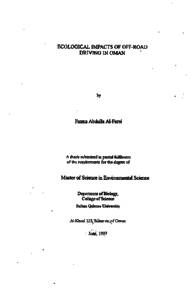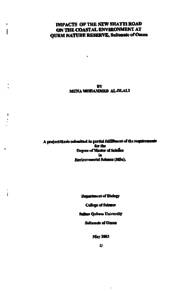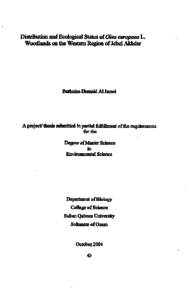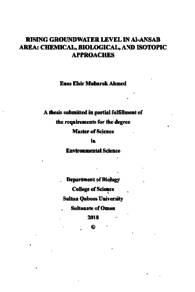Document
Ecological impacts of off-driving in Oman
Publisher
Sultan Qaboos University
Gregorian
1997
Language
English
English abstract
The study was designed to assess three levels of traffic intensity, one, five and
ten passes of a recreational vehicle over a flat desert. Water infiltration depth, soil
organic matter, seed density, and germination and growth of annual plants on the
tracks were compared to undisturbed desert.
With 20 mm of simulated rainfall there was a significant reduction in infiltration depth of five and ten passes compared to the control plots and the one pass track, presumably due to compaction. The amount of soil organic matter content was low and there was no significant difference between the tracks and control plots. Although there was a high variation in seed densities in the study area, there was no significant difference between the tracks and control plots.
This year's unusually high rainfall simulated widespread germination of annual plants and may have reduced the effects of compaction. Sixteen species of annual plants were recorded. No significant difference in plant density and biomass between the control plots and tracks were found.
Although this study recorded light ecological damage, this was probably due to this year's unusual high rainfall. Further studies are suggested to fully understand the exact damage off-road vehicles (ORVs) have on the Omani desert. The key issue to reduce the impacts of ORVs is to educate the public of the importance of protecting desert habitats and the damages that are caused by ORVs.
Member of
Resource URL
Category
Theses and Dissertations




